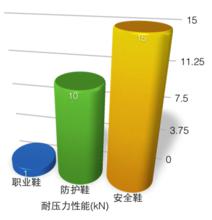安全鞋
安全鞋是安全类鞋和防护类鞋的统称,一般指在不同工作场合穿用的具有保护脚部及腿部免受可预见的伤害的鞋类。
中文名:安全鞋外文名safety shoes
标准:GB21148-2007/EN-20345
意义:安全类鞋和防护类鞋
目的:保护脚部及腿部
安全鞋各国标准
安全鞋中国
中国安全鞋标准现行的是GB21148-2007,中国安全鞋标准基本参考欧洲标准进行制定。
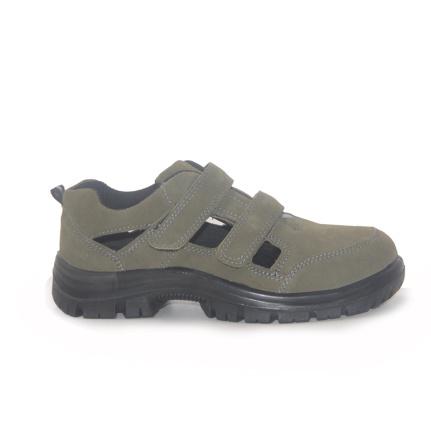
GB4014-83皮制安全鞋;GB7054-86胶面防砸安全靴。
安全防护鞋属于高技术含量及高附加值的鞋类产品,安全防护鞋的生产过程对原料、辅料、化料、机械设备等的要求都很高,目前国内许多具有一定规模和档次的制鞋企业已将目光投向安全防护鞋这块以往被发达国家占有的市场领域。
安全鞋欧洲
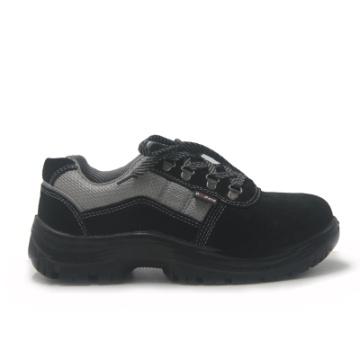
欧洲标准EN345《专用安全、防护及工作鞋》 该欧洲标准由CEN/TC61“脚和腿的防护用品”技术委员会制订,其秘书处由BSI担任。该标准对安全防护鞋的款型设计、整鞋、帮面、鞋里、鞋舌、内底、外底等结构及性能指标进行了规定。标准中规定的各项目测试方法与其他同类标准类似,其方法原理也普遍适用于大多数安全防护鞋。
安全鞋美国
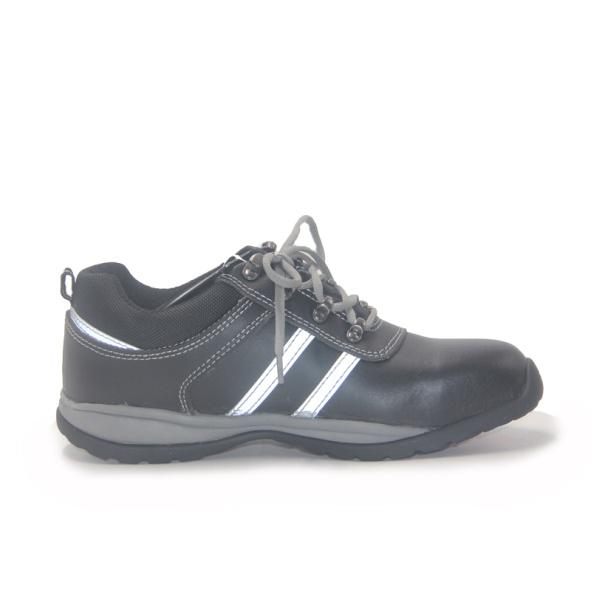
(ANSI-Z41-1991)根据鞋对压缩和冲击的抵抗能力,有防护鞋头的安全鞋可分为种。
安全鞋参数
安全鞋包头抗冲击性能
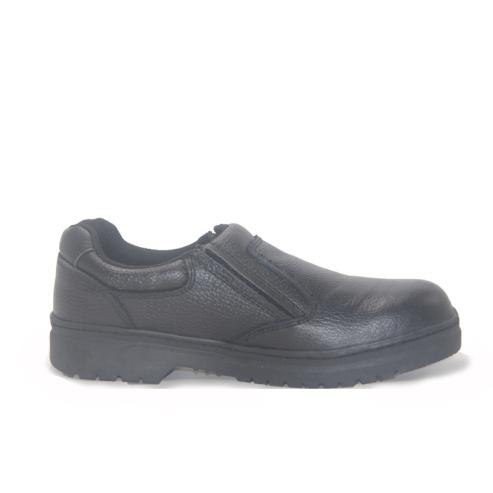
用规定重量的钢制冲击锤进行冲击试验,包头受冲击时包头下的间隙高度应小于规定值,而且包头在测试轴线方向不应出现任何穿透性裂纹。值得注意的是各国标准中对冲击锤的重量、规格、冲击高度及试验机的构造等的规定有所不同,实际测试时应加以区分。
安全鞋抗刺穿性能
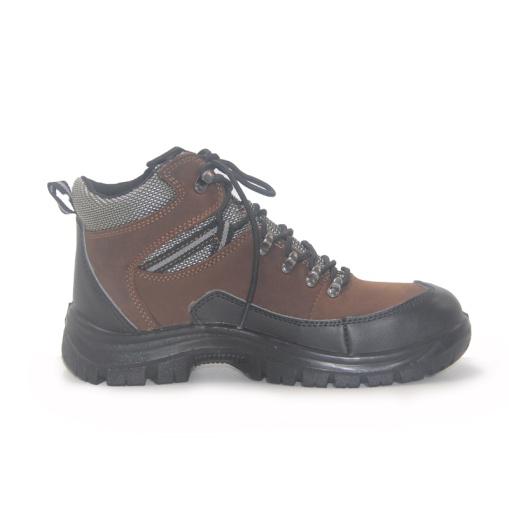
试验机上装有一压板,压板上装有试验钉,试验钉为一个截去的头,钉头的硬度应大于60HRC。将鞋底试样放在试验机的底盘上,位置可使试验钉通过外底进行刺穿,试验钉以10 mm/min ± 3 mm/min的速度刺穿鞋底,直到穿透为止,记录所需的大力。每只鞋底上选4个点进行试验(其中至少有1个点在跟部),各个点相距不低于30mm,且距内底边缘距离大于10 mm。有防滑块的底,应在块之间进行刺穿。4个点中的2个点应在距植底楞所在边缘线10-15 mm的距离内进行测试。如果湿度会对结果产生影响,测试前应将鞋底浸于加20℃±2℃的去离子水中16±1h。
安全鞋防静电性能

鞋样经在干燥和湿的大气中调节后,将干净的钢球填充入鞋内并放到金属探针装置上,使用规定的电阻测试仪器,测量前面两个探针与第三只探针间的电阻。一般情况下,导电鞋要求电阻不应大于l00K欧姆 ;防静电鞋要求电阻应在100K欧姆至100M欧姆之间。
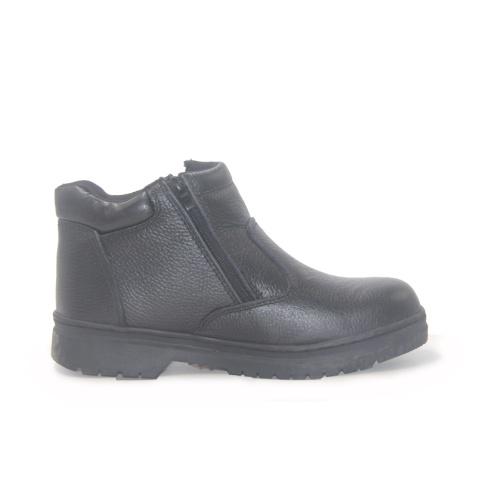
安全鞋隔热性能以成鞋作为试样,将热电偶装在内底连接区域的中心处,并将钢球填入鞋内。调节沙浴锅的温度至150℃士5℃,将鞋样放于其上,使沙子接触到鞋的外底,使用与热电偶相连接的温度测试装置,测定内底的温度与相应的时间,给出温度的增加曲线。计算从试样放置到沙浴上起30min后所增加的温度。一般隔热鞋要求内底表面的温度增加值小于22℃。
安全鞋鞋跟性能
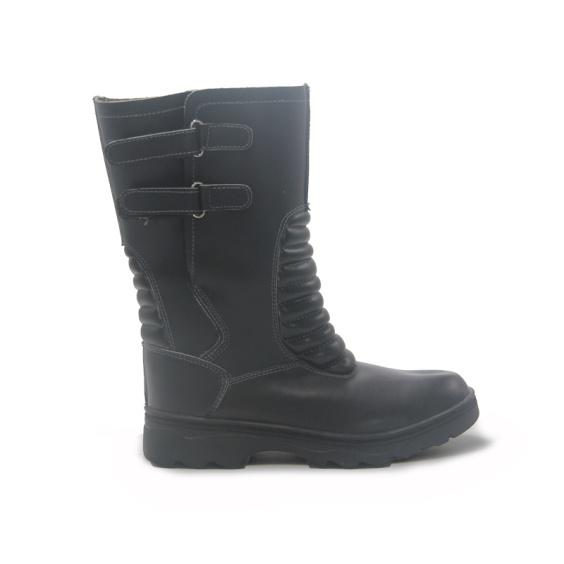
试验仪器的至大压缩负荷6000N,配有记录负荷/变形特征的装置。将带跟的鞋样置于一钢板上,将试验冲头在鞋跟部分的中心内侧靠着内底。以10mm/min士3 mm/min的速度施加负荷。绘制负荷/压缩曲线,并计算吸收能量E,以焦耳表示。
安全鞋防滑性能
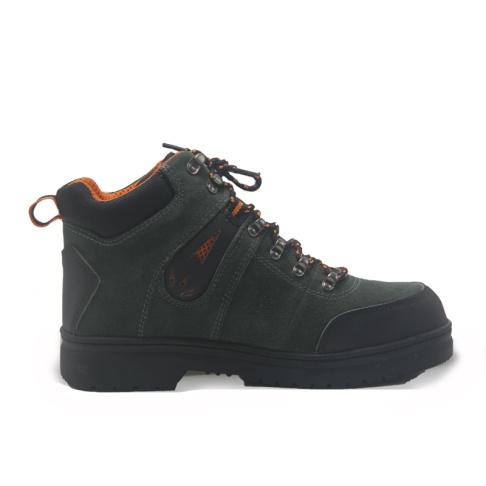
该标准 规定测试鞋底的防滑系数,但对防滑块的设计、规格等作了规定,如鞋底厚度、防滑块高度、与鞋底边缘的距离等均有要求。
安全鞋耐酸碱功能
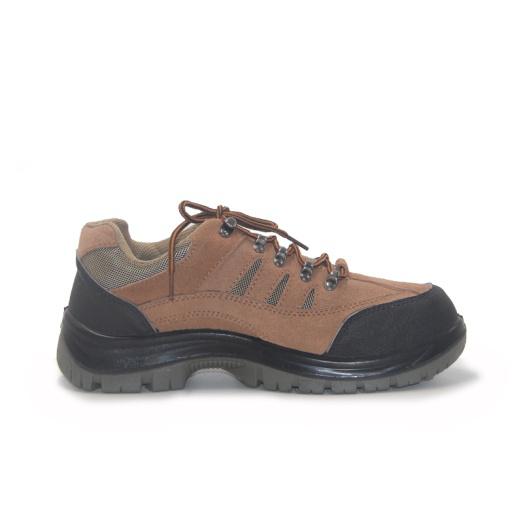
适用于电镀工、酸洗工、电解工、配液工、化工操作工等。注意事项:耐酸碱皮鞋只能适用于一般浓度较低的酸碱作业场所;应避免接触高温,锐器损伤鞋面或鞋底渗漏;穿用后应用清水冲洗鞋上的酸碱液体,然后晾干,避免日光直接照射或烘干。
1、硬度变化 (IRHD) 硫酸、盐酸、氢氧化钠△H=±10 。(检测结果为+6、+4、+3,符合标准)
2、质量变化 (%) 硫酸、盐酸、氢氧化钠△m=±2(检测结果为+0.6、+0.5、+0.6,符合标准)。
3、拉伸性能 (%) 硫酸、盐酸、氢氧化钠拉伸强度变化降低小于15(检测结果为-8、-6、-4,符合标准)。
4、拉断伸长率(%) 硫酸、盐酸、氢氧化钠变化不超过±20(检测结果为-8、-5、-4,符合标准)。
安全鞋功能用途

随着我国制鞋技术的不断进步以及全球鞋用材料的日益更新,安全鞋类品种的逐步多样化。国内安全鞋的设计及技术要求开始与国外逐步接轨,采用电脑化管理,分电绝缘、防静电、耐酸碱、防刺穿、保护足趾、一般防护鞋六大类,具有良好的耐油、防砸、防静电、防穿刺、耐酸碱及绝缘等性能,分SB/SBP/S1/S1P/S2/S3六类安全等级,广泛适用于机械、冶金、建筑、化工、制药、采矿、油田、电力等行业。每双鞋都经过公司过程品质控制与出厂严格检测,符合国家安全标准(大部分指标超过国家标准)与欧洲安全鞋EN345标准,产品得到了国内超过500家工矿企业尤其是欧美合资企业的青睐,并远销欧盟、美国、及澳大利亚等地区国家。
安全鞋功能描述

安全鞋是安全类鞋和防护类鞋的统称,一般指在不同工作场合穿用的具有保护脚部及腿部免受可预见的伤害的鞋类。不同的安全鞋适用范围不同,对安全鞋功能的要求也不同,具体表现为:
保护足趾安全鞋:内包头安全性能为AN1级,适用于冶金、矿山、林业、港口、装卸、采石机械、建筑、石油、化工行业等。
防刺穿安全鞋:抗刺穿强度为1级,适用于矿山、消防、建筑、林业、冷作工、机械行业等。
安全鞋防砸

采用行业标准(保护足趾安全鞋LD50-94),保护足趾安全鞋的内衬为钢包头,既具有耐静压及抗冲击性能,防刺,防砸,十分安全,经检验,耐压力为10KN,鞋头抗冲击力23KG冲击锤自450MM高度自由落下冲击鞋头后,鞋内变形间隙>=15MM,主要适用于矿山,机械建筑安全,冶金,钢铁,港务吊装等重工业行业所使用,起到防护足趾的安全的皮鞋,内有橡胶及弹性体支撑,穿着舒适,且不影响日常劳动操作。
安全鞋防穿刺
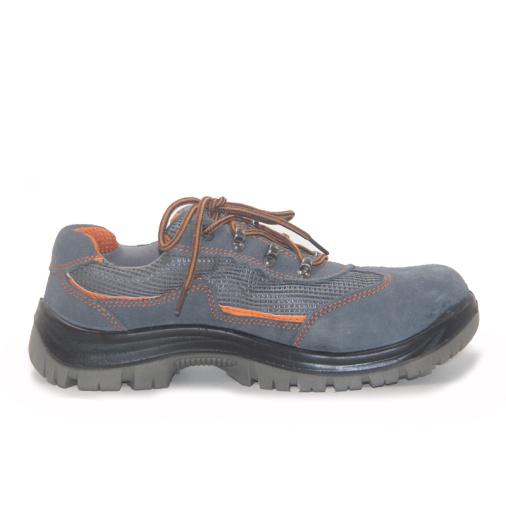
保护脚掌免受尖锐物的刺伤,至大可承受1100N的穿刺力,国家特级标准。
安全鞋防静电

防静电皮鞋根据GB4385-1995标准进行生产,电阻值范围为100K’Ω-1000M’Ω,该产品具有透气性能好,防静电,耐磨,防滑等功能,主要适用于航空,航天危化个业所起到避免因静电而发生易燃易爆事故。
安全鞋耐油

按照耐油标准测试,体积增加不大于12%。若体积不增加,而缩小,其缩小量大于原体积的0.5%或硬度增加大于10(邵尔A),按GB/T 3903.1规定屈挠40000次裂口增长不大于7mm。
安全鞋保养方法

安全鞋需要正确的使用和保养,才能确保发挥应有效能及维持使用者的足部健康,因此下列事项应多加注意:
定期清理安全鞋,其中要重点注意的是不要采用溶剂作清洁剂。
其次:经常清理鞋底,避免积聚污垢物,特别是绝缘安全鞋,鞋底的导电性或防静电效能会受到鞋底污垢物的影响,甚至危及生命安全。
再次:千万不要随意的修改安全鞋的构造。因为正规的安全鞋的构造是经过设计师很好的设计来保护人身安全的,随意的改造可能会影响安全鞋的安全指数。
然后:不使用安全鞋时应储存在阴凉、干爽和通风良好的地方。安全鞋是人们保护人身安全的工具,在使用和保养方面都必须慎重认真执行。
安全鞋使用说明
安全鞋足趾保护

1、产品执行标准 LD50-1994《保护足趾安全鞋(靴)》。新国家标准GB21148-2007《个人防护装备 安全鞋》。
2、等级An1、An2、An3、An4、An5鞋头耐静压力分别是15KN、10KN、4.4KN、3.0KN、1.5KN,鞋头内部间隙≥15mm 。等级An1、An2、An3的安全鞋,以23Kg冲击锤分别从900mm、450mm、225mm高自由落下,鞋头内部间隙≥15mm。等级An4、 An5的安全鞋,以5Kg冲击锤分别450mm、225mm高自由落下,鞋头内部间隙≥15mm。
3、An1适合于在冶金、矿山、林业、港口、船舶、装卸、采石、重工等作业;An2适用于在机械、建筑、石油化工等作业场所;An3适用于在电子、食品、医药等行业;An4~An5适用于纺织工业及钳工作业,用以足趾免伤害的劳动保护鞋(劳保鞋),是劳动保护必备用品。
4、安全鞋运输和储存时要避免阳光直射、雨淋及受潮,储存库内应通风良好、干燥、谨防霉防蛀,堆放离开地面、墙壁0.2m以上,切勿与酸、碱、和其他腐蚀性能及有毒有害物接触。
安全鞋防静电鞋
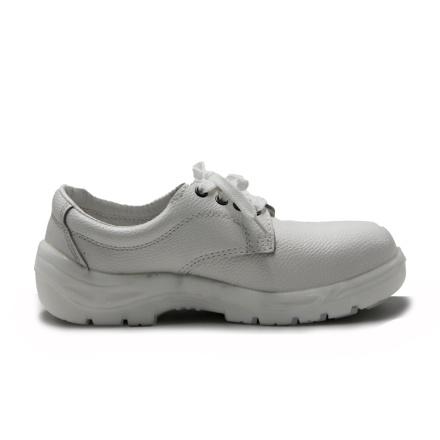
1、产品执行标准GB4385-1995。电气性能按GB4385-1995中附录A进行检测。
2、防静电鞋是能清除人体静电又能防止250V以下电源点击额度防护鞋。适用于易燃易爆作业场所。
3、防静电鞋禁止当绝缘鞋使用,穿用时,不应同时穿绝缘的毛料厚袜子及绝缘垫,并且应用于防静电的地面。
4、防静电鞋在穿用过程中,一般不超200h 应进行鞋电阻值测试一次。如电阻不在规定范围100KΩ-1000MΩ内则不能作为防静电鞋继续使用。自生产之日起超过18个月的产品应进行相关的电性能检验,符合标准要求方可销售和使用。
5、在储存时,防静电安全鞋应存放在干燥通风的仓库内,防止霉变,堆放离开地面、墙壁0.2m以上,离开一切发热体1m以上,在运输和储存过程中,严禁与油、酸、碱类或其他腐蚀性物品接触。
安全鞋电绝缘皮鞋

1、产品执行标准GB12011-2000。主要技术参数:实验电压6KV、泄露电流≤1.8mA 时间1min不击穿。
2、产品为6KV牛革面绝缘鞋,适用于工作环境1KV以下穿着,工作时作为辅助安全用具和劳动保护用品鞋使用。在使用时,必须严格遵守电业安全工程规程( DL408和DL409 )的规定。
3、穿用电绝缘鞋时其工作环境应保持鞋面干燥。(电绝缘鞋有时又称为电工鞋)
4、产品应严禁与锐器、高温、酸、碱类或其他腐蚀性物品接触,凡帮底有腐蚀、破损之处,均不能再以电绝缘鞋使用。
5、在储存时,应存放在干燥通风的仓库内,防止霉变,堆放离开地面、墙壁0.2m以上。储存期为24个月,超过 24 个月的电绝缘安全鞋须预防性电性能检验。
安全鞋防刺穿鞋
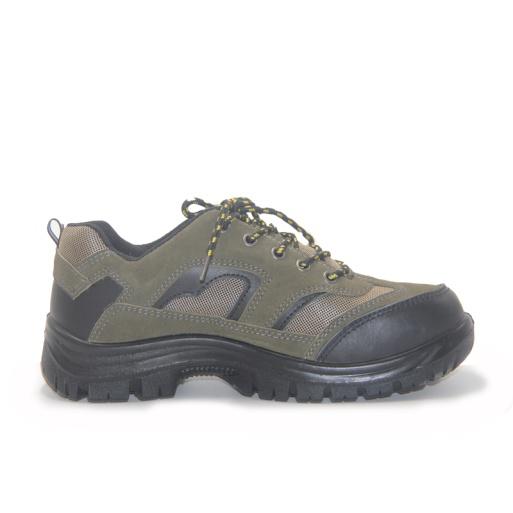
1、产品执行标准GB12017-1989,适用于矿山、林业、消防、建筑等行业,防止足底刺穿伤的劳保鞋。是劳动保护的必须用品。
2、防刺穿特级、Ⅰ级、Ⅱ级等,其抗穿力分别是≥1100N、780N、490N,应根据不同的工作环境选用相应级别的防刺穿鞋。
3、运输和储存时要避免阳光直射、雨淋及受潮,储存库内应通风良好、干燥、谨防霉防蛀,堆放离开地面、墙壁 0.2m 以上,防刺穿劳保鞋切勿与酸、碱、和其他腐蚀性能及有毒有害物接触。
安全鞋耐油防护鞋

1、产品执行标准GB16756-1997,适用于工厂、煤矿、油田等行业穿着。
2、产品自生产日期起储存期为2年,耐油防护鞋应放在通风、干燥、防霉、防虫蛀的场所保存,严禁与酸、碱类或其他腐蚀性物品接触。
安全鞋使用规范
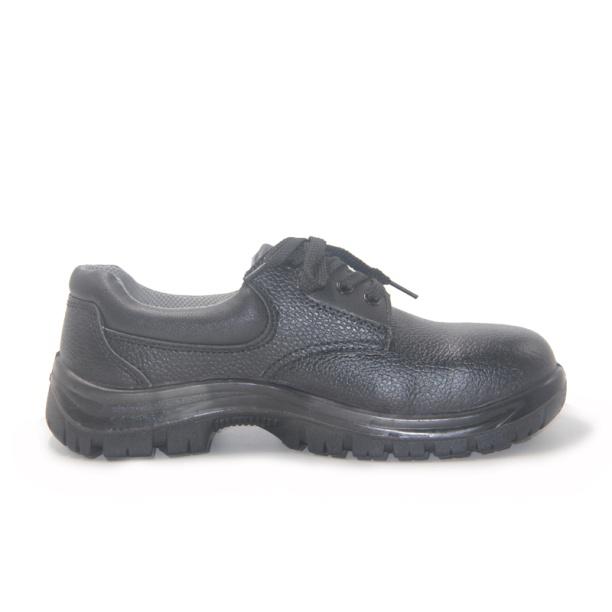
防油鞋用于地面积油或溅油的场所;防水鞋用于地面积水或溅水的作业场所;防寒鞋用于低温作业人员的足部保护,以免受冻伤。
防刺穿鞋用于足底保护,防止被各种尖硬物件刺伤。
防砸鞋的主要功能是防坠落物砸伤脚部。鞋的前包头有抗冲击材料。
炼钢鞋主要功能是防烧烫、刺割,应能承受一定静压力和耐一定温度、不易燃。这类鞋适用于冶炼、炉前、铸铁等。
除上述外还有一些特殊的鞋盖配套使用,如帆布、石棉、铝膜材质的鞋盖等。
防护鞋的选用与维护防护鞋的选用应根据工作环境的危害性质和危害程度进行。防护鞋应有产品合格证和产品说明书。使用前应对照使用的条件阅读说明书,使用方法要正确。特殊防护鞋,用后应检查并保持清洁,存放于无污染干燥的地方。
安全鞋尺码选择
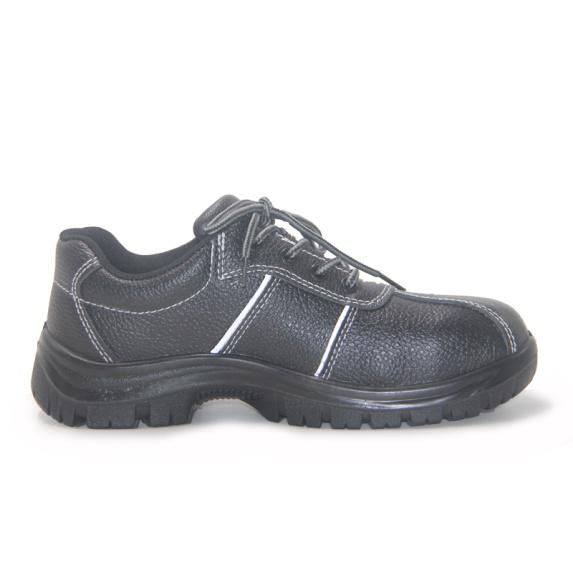
市场上流通的鞋码比较杂乱,比较可靠的方法就是通过试穿来选择合适的安全鞋。试穿要有舒适感,鞋头的钢包头对脚不产生挤压和卡脚,脚趾能灵活活动,没有向前或向后滑动的感觉,走路时鞋后跟无脱鞋感。所谓合脚,主要是指:鞋的尺码与脚吻合,不大也不小;脚趾在鞋中能自由活动;鞋的腰窝支撑牢固贴合脚弓;鞋的后跟稳固。
即使是通过试穿来选择安全鞋,其选择的基本要点也是不能疏忽的。主要有以下几个方面:
1.安全鞋的前尖留有一定余量 ,尤其是安全鞋, 因为其前头有坚硬的钢头,穿用时,一注意鞋头要有足够余量。平时如果站立的时间比较长,那么脚趾更应该有活动的余地,否则,脚趾长期处在挤压的状态下,时间久了就会脚造成很大的伤害!有很多人在选择安全鞋时觉得同等鞋号的安全鞋比平时穿的时装鞋要大一些,这是安全鞋在制作时就按照国家要求加大了,实际上我们平时穿多大码的鞋,就买多大尺码的安全鞋就可以。
2. 安全鞋的品种不同,其肥瘦要求也不相同。脚的肥瘦是用脚掌的宽度和跖趾围长表示的,鞋的肥瘦是用鞋腔的内部空间大小决定的,它依赖做鞋用的鞋楦跖趾围长和楦底宽度尺寸,一般由生产厂家选择决定。消费者只能依照试穿效果来选择。
3.安全鞋的后跟与脚后跟不紧不松正好吻合
4. 安全鞋面不能挤压脚背
5. 安全鞋的腰窝与脚弓吻合,腰帮必须抱脚
安全鞋与防护鞋的区别

很多人认为防护鞋就是安全鞋,其实,这种说法是不正确的。根据我国现行标准,安全鞋和防护鞋是两个不同的标准。安全鞋的国家标准GB21148-2007,防护鞋的国家标准时GB21147-2007,从标准号中就可以知道两者是不一样的,否则,国家也无需制定不同的标准。具体来说,防护鞋和安全鞋的国家标准有很多东西是类似的,主要区别我们看下图:

